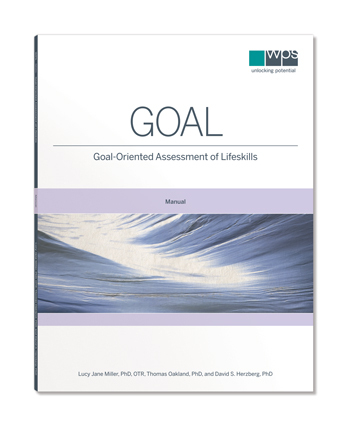Goal-Oriented Assessment of Lifeskills (GOAL) aids evaluation of functional motor abilities needed for daily living
Goal-Oriented Assessment of Lifeskills
GOAL
Goal-Oriented Assessment of Lifeskills (GOAL) aids evaluation of functional motor abilities needed for daily living‹ View all tests and materials
GOAL Manual
9780749166595
Qualification Level
B
£129.20